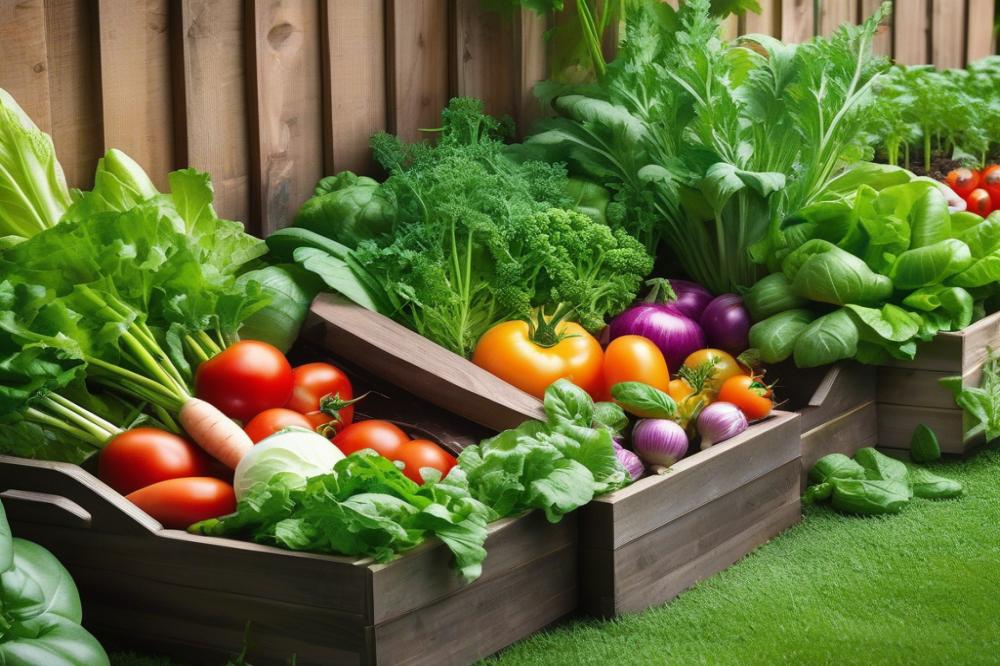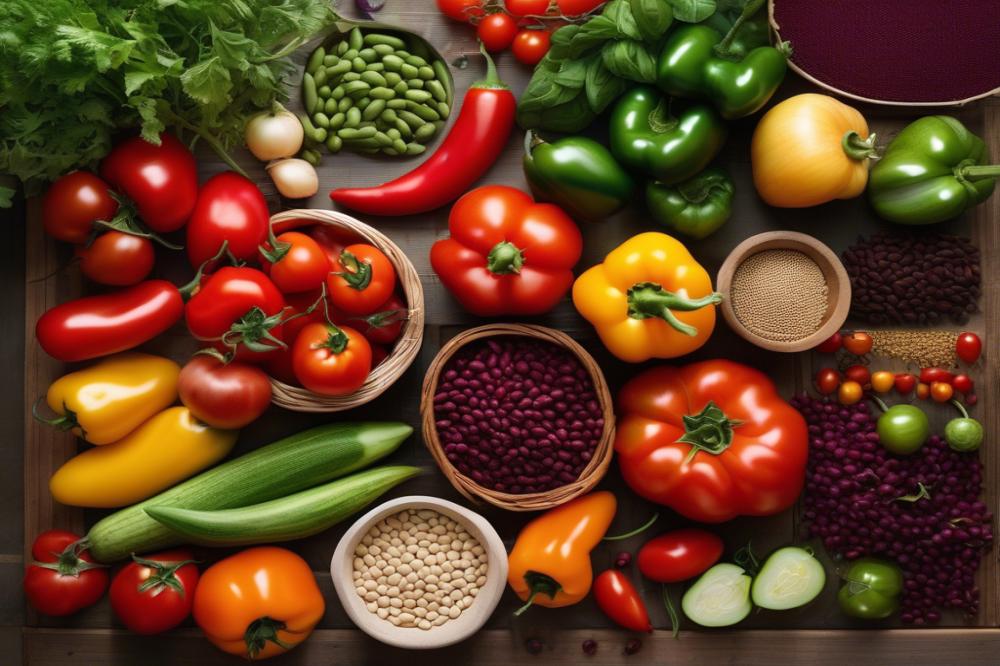Introduction
Moonglow Tomatoes stand out for their bright Yellow Fruits and are cherished treasures in the world of heirloom gardening. These vibrant gems not only add a splash of color to gardens but also come with a distinct flavor that excites the palate. Gardeners appreciate these varieties not just for their appearance, but for how much joy they bring when savored fresh from the vine.
The significance of growing heirloom varieties like Moonglow Tomatoes lies in their history and the preservation of these old types. Often, they carry stories that connect us to past gardening practices and tastes. Their cultivation becomes not merely a task but a journey into understanding agricultural heritage.
Successful gardening revolves around knowing the right techniques. Familiarity with growing tips, such as soil quality and sunny location, greatly enhances fruit production. Disease resistance is another crucial factor; healthy plants yield tastier harvests. Learning how to cultivate these tomatoes can pave the way for a gardener’s ultimate satisfaction during the harvest season. By grasping the foundational aspects of caring for these plants, one can truly enjoy the bright Yellow Fruits they offer.
Understanding Moonglow Tomatoes


The Moonglow tomato variety is celebrated for its striking, bright yellow fruits. With smooth skin and a slightly sweet taste, this tomato adds a lovely pop of color to dishes. Its history traces back to the ongoing tradition of heirloom varieties, which are often cherished for their flavors and textures. Moonglow stands out among other heirlooms due to its reliable fruit production and unique golden hue.
When comparing it to different tomato varieties, differences become clear. Some heirlooms may be more susceptible to diseases, while Moonglow exhibits good disease resistance. This quality makes it a favorable choice for home gardeners. It also requires similar care as other heirloom types but thrives best in a sunny location. Proper sunlight is essential for optimum growth and fruit development.
The benefits of cultivating Moonglow tomatoes extend beyond their appearance. They are particularly well-suited for organic gardening. This means gardeners can avoid chemicals and still achieve vibrant crops. Soil quality plays a crucial role in this process. Fertile, well-draining soil helps the plant establish strong roots, ultimately leading to a more abundant harvest.
Growing tips for this variety include regular watering and mulching to retain moisture. Keep an eye out for pests, but with its robust nature, the Moonglow often fares well against them. Harvesting is one of the most rewarding parts of gardening and with this tomato, you can look forward to gathering golden fruits as they ripen on the vine.
Optimal Growing Conditions


When it comes to cultivating Moonglow tomatoes, selecting a sunny location is crucial. Tomatoes thrive best with at least six to eight hours of direct sunlight each day. This exposure not only aids in photosynthesis but also contributes to the bright yellow color of the fruits. A garden spot that maximizes light will set the stage for vibrant growth and plentiful harvests.
Soil quality plays a significant role in fruit production. A well-draining, nutrient-rich soil will give these tomato varieties the best chance to flourish. Heavy clay or overly sandy soils can lead to problems, such as poor drainage or nutrient leaching. Conducting a soil test is a wise step. This can help gardeners understand pH levels and nutrient content. For optimal growth, the ideal pH ranges from 6.0 to 6.8. Staying within this range promotes healthy plant development and a rich yield.
Necessary amendments can enhance soil quality. Adding compost or well-rotted manure boosts organic matter, enriching the soil with nutrients. Peat moss can improve moisture retention, which is vital during dry spells. Additionally, mixing in natural fertilizers can provide essential minerals. By tailoring the soil to meet the needs of the plants, gardeners are laying a foundation for success.
Spacing is another vital consideration. Plants should be spaced about 18 to 24 inches apart. Good air circulation helps minimize the risk of disease, which can be a concern in organic gardening. Proper support techniques, like staking or caging, not only keep the plants upright but also increase airflow around the foliage. This practice can lead to healthier plants and better fruit development. Regular monitoring allows gardeners to make adjustments as necessary, ensuring maximum productivity.
Understanding these factors can significantly impact the success of growing tomatoes. With proper conditions, gardeners can look forward to bountiful yields and delicious, bright-colored fruits. Following these growing tips will pave the way for a fruitful gardening experience.
cultivation Techniques for Moonglow Tomatoes


Planting Moonglow tomatoes begins with selecting the right location. A sunny spot is essential for optimal growth. These tomatoes thrive when they receive at least six to eight hours of direct sunlight each day. Prepare the soil by testing its quality. Aim for well-draining soil enriched with organic matter. Adding compost can significantly improve soil health.
When planting, consider space. Each plant needs room to grow without hindrance. A spacing of 18 to 24 inches between plants works well. Dig holes deep enough to accommodate the root system. Place the seedlings carefully, and cover the roots with soil. Water gently to settle the soil around the roots.
Watering Guidelines
Moonglow tomatoes require consistent moisture. Water them deeply once or twice a week. Check the soil moisture before watering. The top inch of soil should feel dry. Overwatering can lead to root rot, which threatens fruit production.
Fertilization Tips
Fertilizing your plants is vital for healthy growth. Use an organic fertilizer high in phosphorus when the plants begin to flower. This encourages blooming and fruit set. Follow package instructions carefully to avoid overwhelming the plants.
Pruning Techniques
Proper pruning boosts air circulation and sunlight exposure. Squeeze out the suckers that grow in the joint between the stem and branches. This technique enhances disease resistance and allows the plant to focus its energy on producing fruit.
Organic Gardening Practices
Utilizing organic gardening methods promotes sustainability. Employ natural pest control methods such as introducing beneficial insects. Mulching can help retain soil moisture and suppress weeds. Monitor plants regularly for signs of pests or diseases.
Harvesting the Fruits
Timing the harvest is crucial. Wait until the tomatoes turn a rich golden yellow. Picking the fruit at the right time maximizes flavors and nutrients. Gently twist or cut the stem to avoid damaging the plant. Enjoy the satisfaction of homegrown tomatoes that delight the taste buds.
Managing Pests and Diseases
Many gardeners encounter common pests and illnesses that affect the growth and yield of their tomatoes. Recognizing these issues early can save your garden from significant damage. Aphids, spider mites, and whiteflies are frequent culprits. These small insects can weaken plants by sucking sap from the stems and leaves. Additionally, diseases like blight, blossom end rot, and mold may hinder growth. Each of these problems can affect fruit production and overall plant health.
Proper cultivation practices play a vital role in preventing pest infestations. Maintaining good soil quality by enriching it with organic matter helps establish strong roots. A sunny location is ideal for these plants because it promotes healthy growth and increases resilience against pests and disease. Furthermore, rotating crops annually is a smart strategy. This method prevents pests from establishing a permanent home. Using companion planting can also deter harmful insects. Consider planting marigolds or basil near tomatoes to keep pests at bay.
Organic gardening offers many solutions for pest management. Insecticidal soaps or neem oil serve as effective treatments against unwanted bugs. These substances are safe for the environment and won’t damage plants. Regularly inspecting your plants helps identify issues before they escalate. If you see pests, remove them manually or use traps. For diseases, maintaining good airflow and proper watering techniques can greatly reduce the risk of mold and blight.
Many heirloom tomato varieties, including Moonglow, possess a certain level of disease resistance. This feature is essential for gardeners seeking rewards without excessive worry. Selecting seeds that are known for thriving in your local environment can make a difference. Strong plants are less vulnerable, leading to a more successful harvest. Keeping an eye on the overall health of your garden contributes to your plants’ longevity and fruit production.
Harvesting Moonglow Tomatoes
Recognizing the right moment to harvest is crucial for successful gardening. Generally, ripe Moonglow tomatoes exhibit a vibrant yellow hue. They should feel slightly soft to the touch but not overly mushy. Look for a glossy exterior, as this indicates the fruit is ready for picking. If the fruits have greenish spots, they may need more time on the vine.
When it comes to harvesting techniques, a gentle touch is key. Use either scissors or garden shears to snip the stem just above the fruit. This prevents damage to both the tomato and the plant. Adopting this method also helps maintain the plant’s health, allowing for further fruit production. Harvest in the morning when temperatures are cooler. This helps preserve their flavor and texture.
After harvesting, handling the tomatoes with care is essential. Avoid stacking them too high when placing them in a basket. Even slight pressure can bruise the delicate fruits. Storing them in a single layer, preferably in a cool, shaded area, helps maintain quality. For long-term preservation, consider methods like canning or dehydrating, which allow you to enjoy your harvest throughout the year.
In organic gardening, the post-harvest process plays a significant role. It affects not just the flavor but also the overall quality of your fruit. Keep them away from direct sunlight post-harvest to retain freshness. Lastly, check on stored tomatoes regularly. Remove any that show signs of spoilage to prevent it from spreading.
Final Thoughts on Growing Delicious Tomatoes
Recapping the essential points for cultivating Moonglow Tomatoes, it’s clear that proper care is vital. Choose a sunny location with nutrient-rich soil to get started. Regular watering and mulching can help maintain soil moisture and prevent weeds. Remember to provide support for your plants as they grow. This simple structure will protect your harvest.
Home gardening allows everyone to experiment with heirloom varieties, bringing unique flavors and colors to the table. Try adding these to your garden for a truly diverse selection. Different types of tomatoes can create exciting dishes and enhance your meals. The satisfaction of growing your food can be rewarding, and heirloom types often have rich histories too.
Overall, the joy of nurturing plants from seed to fruit is unmatched. Each ripe tomato carries the effort you’ve invested in its growth. Sustainability becomes a part of your daily life, allowing you to enjoy organic produce right from your backyard. Whether you are just starting out or have years of experience, creating your little tomato patch can be a fulfilling adventure. Embrace this opportunity to enrich your culinary experiences and contribute positively to the planet!



